|
Type
|
Soak
|
Cook
|
Description
|
Uses in cooking
|
Nutrition
|
|
Aduki Bean
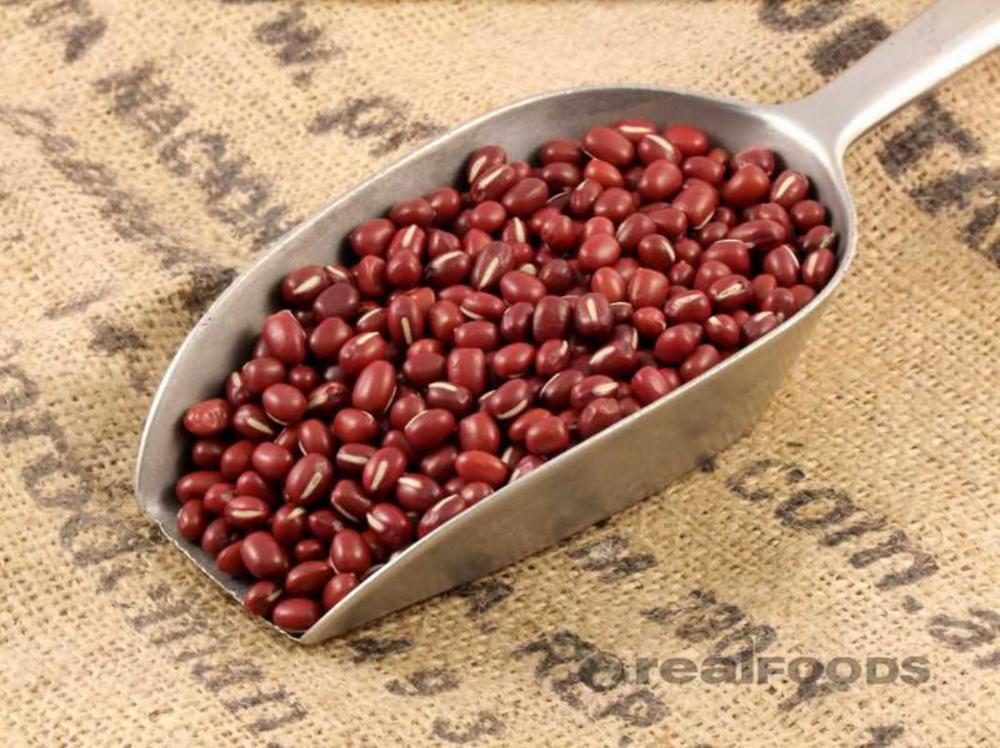
|
No (if you do want to, 2 hours ought to do it)
|
45 – 60 minutes if simmering from soaked.
Up to 2 hours if unsoaked.
Pressure cooker 14-20 Mins
Pre-soaked -pressure cooker 5-9 Mins
|
Popular in the Far East, especially Japan, Aduki Beans are a hard dark red bean, which are extensively used in macrobiotic cooking. They have a strong nutty flavour.
Prized for their health-giving properties, reportedly giving benefits to the liver and kidneys.
Easier to digest than other beans.
|
Widely used in sweet dishes in China and Japan often cooked, pureed and added to sugar to make a paste to use in sweets and desserts.
Many folks cook them with rice, their red colour lending the dish a lovely pink hue.
They are the main ingredient in Dim Sum fillings.
|
Very low in fat (even less than the other beans on this list), with a high protein count. Also known as the ‘weight loss bean’ as they are filling yet low in calories.
Macrobiotics consider Aduki beans to be ‘Yang’ or warming.
|
|
Borlotti Bean
Otherwise known as Cranberry Bean
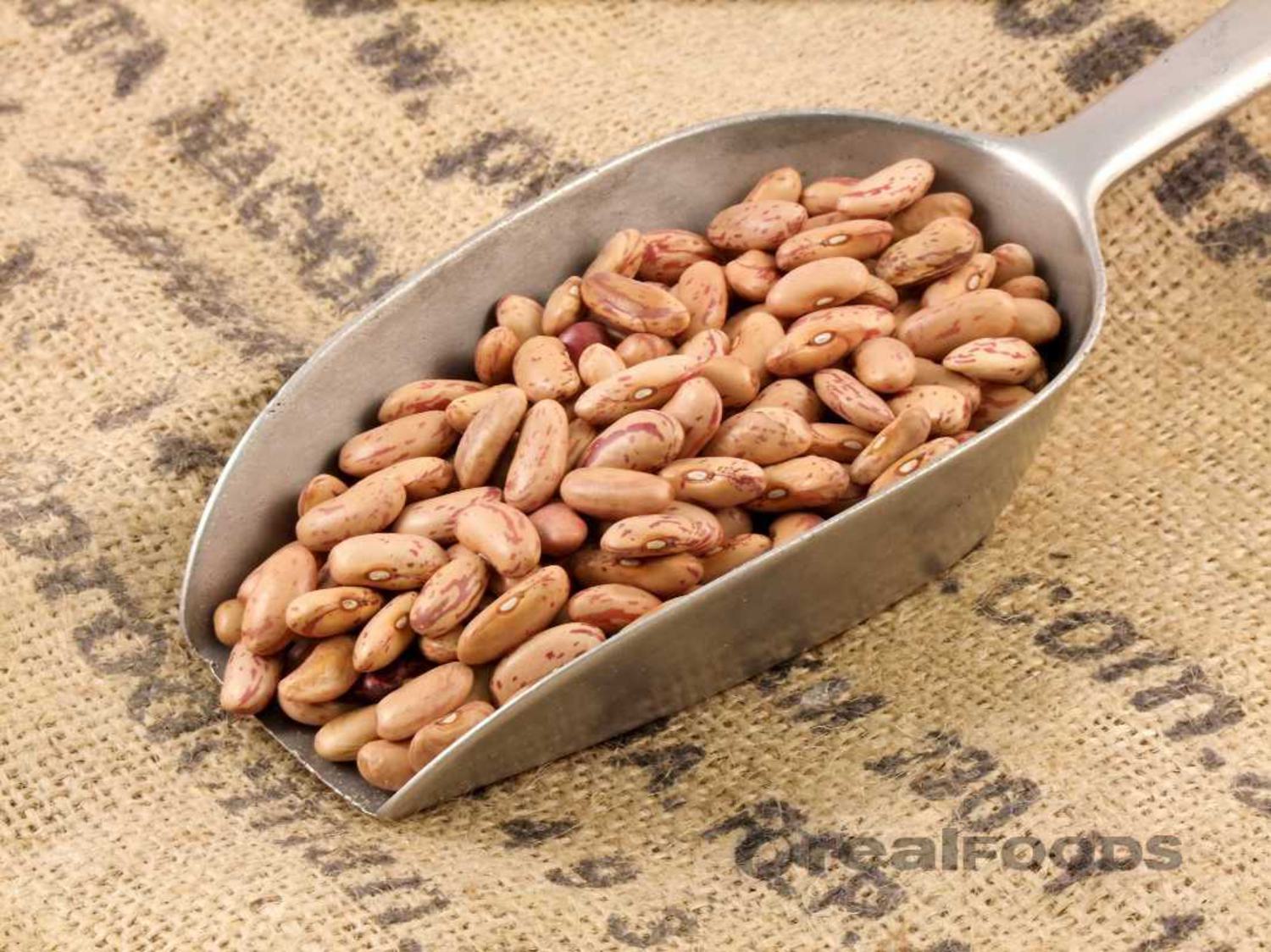
|
Yes (minimum of 4 hours)
|
1 1/2 - 2 hours
Pressure cooker 20-25 Mins
Pre-soaked -pressure cooker
20-25 mins
|
A beige coloured bean with red markings.Borlotti beans are also known as cranberry beans (from those red marks) or French horticultural beans.
They have a nutty taste and a creamy texture.
|
Borlotti beans make an excellent salad bean.
Try cooking with garlic, peppercorns and drizzle with olive oil for a side dish.
They work well in soups and casseroles.
|
Borlotti beans provide a good balance of complex carbohydrates and proteins. They provide a slow, steady source of glucose making it a good food for diabetics.
|
|
Black Turtle Bean
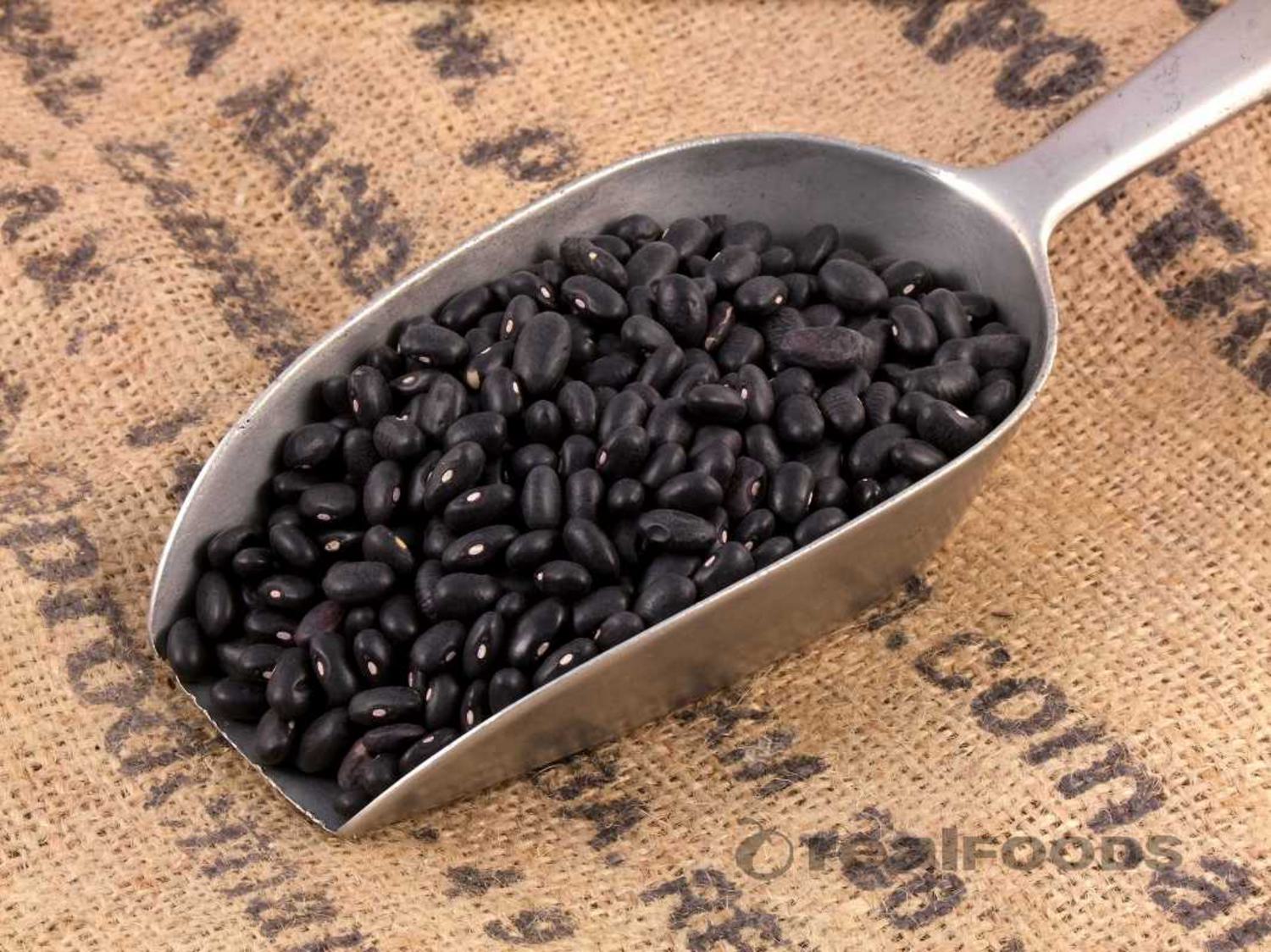
|
Yes (minimum of 4 hours soaking)
|
1 ½ hours
Pressure cooker 22- 30 Mins
Pre-soaked - pressure cooker 4-6 Mins
|
A small, shiny, black bean with a dense almost meaty texture. Some people liken their flavour to mushrooms.
They hold their shape well in cooking.
Widely used in Latin American, Cajun, Creole and Mexican recipes
|
Particularly popular for burritos, they are also great in soups.
Try adding to rice for a Latin American inspired starter or light lunch
The water they are cooked in is often kept to lend colour and seasoning to soups and casseroles.
|
Black Turtle Beans are brilliant for supporting digestive tract health - even better than lentils or chickpeas. In addition, they are very high in phytonutrients (from their black colour).
|
|
Blackeye Bean
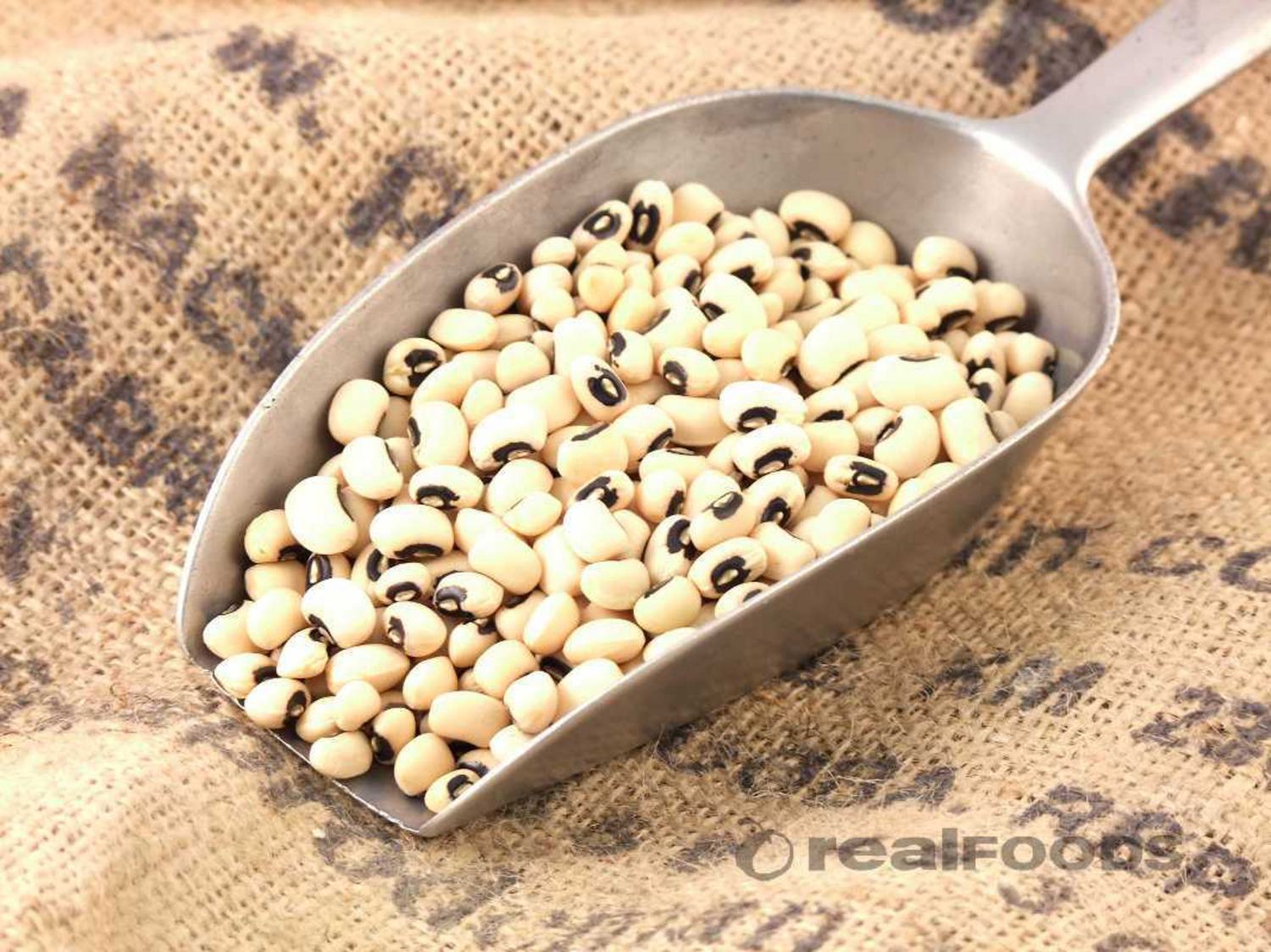
|
No
|
Pressure cooker 6-7 Mins
Pre-soaked - pressure cooker 3-5 mins
|
Small creamy coloured bean with a distinctive black marking where they were attached to the pod (the eye).
Widely used in African and American cooking they are often referred to a Black Eyed Peas
|
Popular in 'rice and peas' they pick up flavours and seasoning easily. Traditionally served in the USA for Hogmanay to bring luck
|
A good source of insoluble fibre and high in protein. They are high in iron and phytonutrients.
|
|
Broad Beans
Known more specifically as Fava Bean in a dried state
|
Yes (at least 8 hours or overnight)
Bicarbonate of soda will help soften tough beans
|
45 mins -1 1/2 hours (depends on size and whether pre-shelled)
Pressure cook - around 4 Mins
Pressure cooker 25-30 Mins
Pre-soaked - pressure cooker 10-12 mins
|
A large, flat bean (you might even call it broad!) Almost a meaty bean, they are members of the pea family.
Split dried beans don't need soaking and cook quickly in under 30 minutes.
An essential ingredient for Egyptian Ful Medames (a spicy stew)
|
A simple way to prepare them is to toss with a little olive oil, lemon juice, garlic and fresh sage. Add salt and pepper to taste. For the best flavour, let stand about an hour to combine the flavours. Try adding them to pasta, rice dishes and soups.
|
They're a great source of protein and carbohydrates, as well as vitamins A, B1 and B2.
|
|
Butter Bean
Otherwise known as Lima Bean
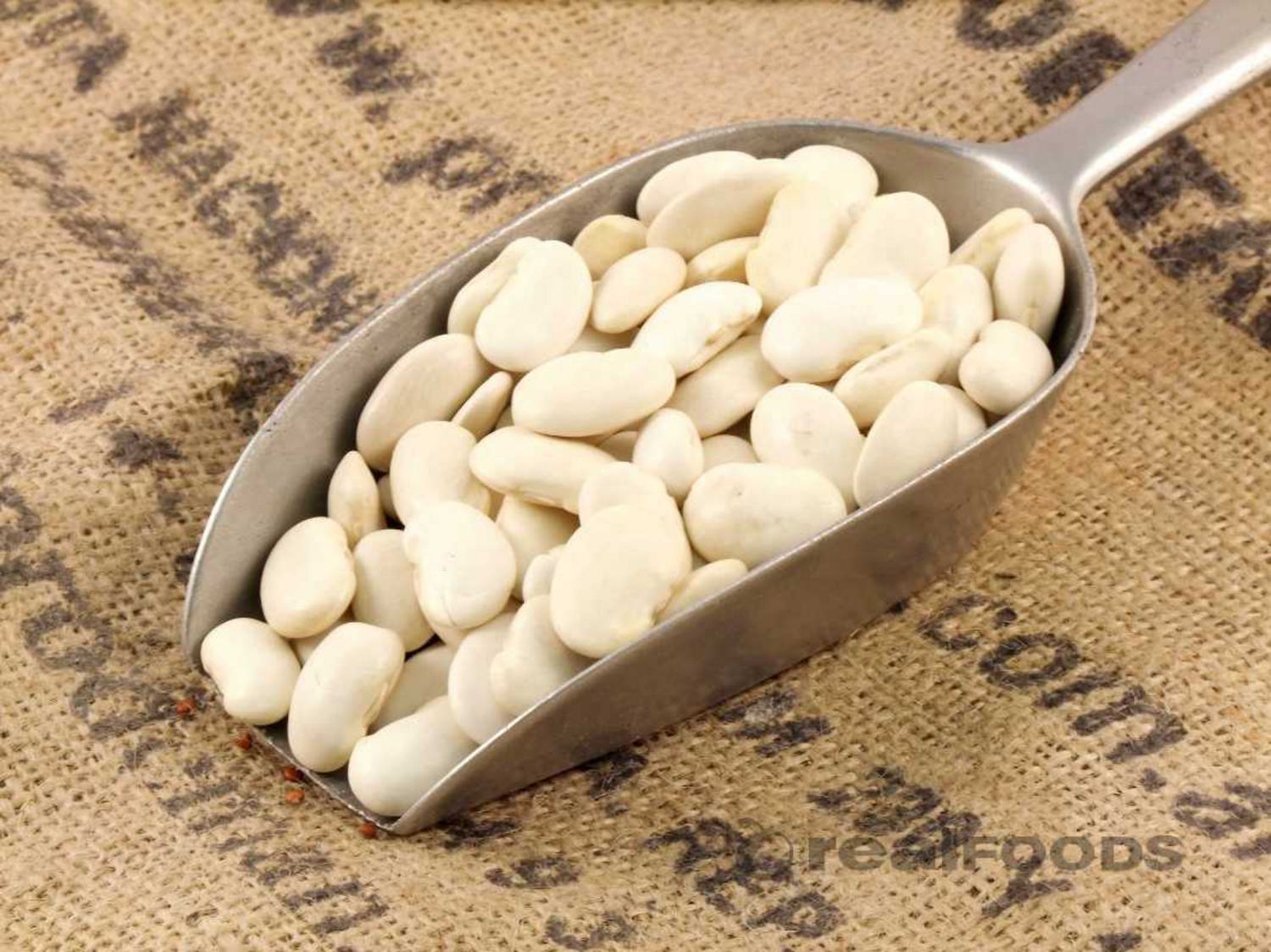
|
Yes
(minimum of 8 hours or overnight)
|
1-1 ½ hours
Pressure cooker 12-15 Mins
Pre-soaked - pressure cooker 5-7 Mins
|
Large, white beans with a creamy texture that have a soft almost floury texture when cooked.
Originally from Peru (hence their other name the Lima Bean), they're usually called butter beans in the UK. Partly for their pale colour but mostly for their creamy texture when cooked.
|
Like haricot beans, they pick up flavours and seasoning well and are useful in soups, casseroles or simply cooked with onion and garlic and dressed in lemon and parsley.
Great as a pate or dip and widely used in American and Italian recipes.
|
Like all the beans they are an excellent source of soluble fibre, protein, copper and manganese.
Also high in B vitamins.
|
|
Calypso Bean
|
Yes (4 hours minimum)
|
1 - 1 1/2 hours
Pressure cooker 12-15 Mins
Pre-soaked - pressure cooker 5-7 Mins
|
A rare heirloom bean, half-white and half-black (which is why it's sometimes called a yin yang or Dalmatian bean.) When cooked the markings fade somewhat but the beans double in size.
A firm texture with a similar flavour to potato.
|
A creamy, rich texture and brilliant in salads, stews and soups. Combined with rice they are great for stuffing veg.
Popular in chowders and great with quinoa for a salad.
|
|
|
Cannellini Bean
Otherwise known as White Kidney Bean
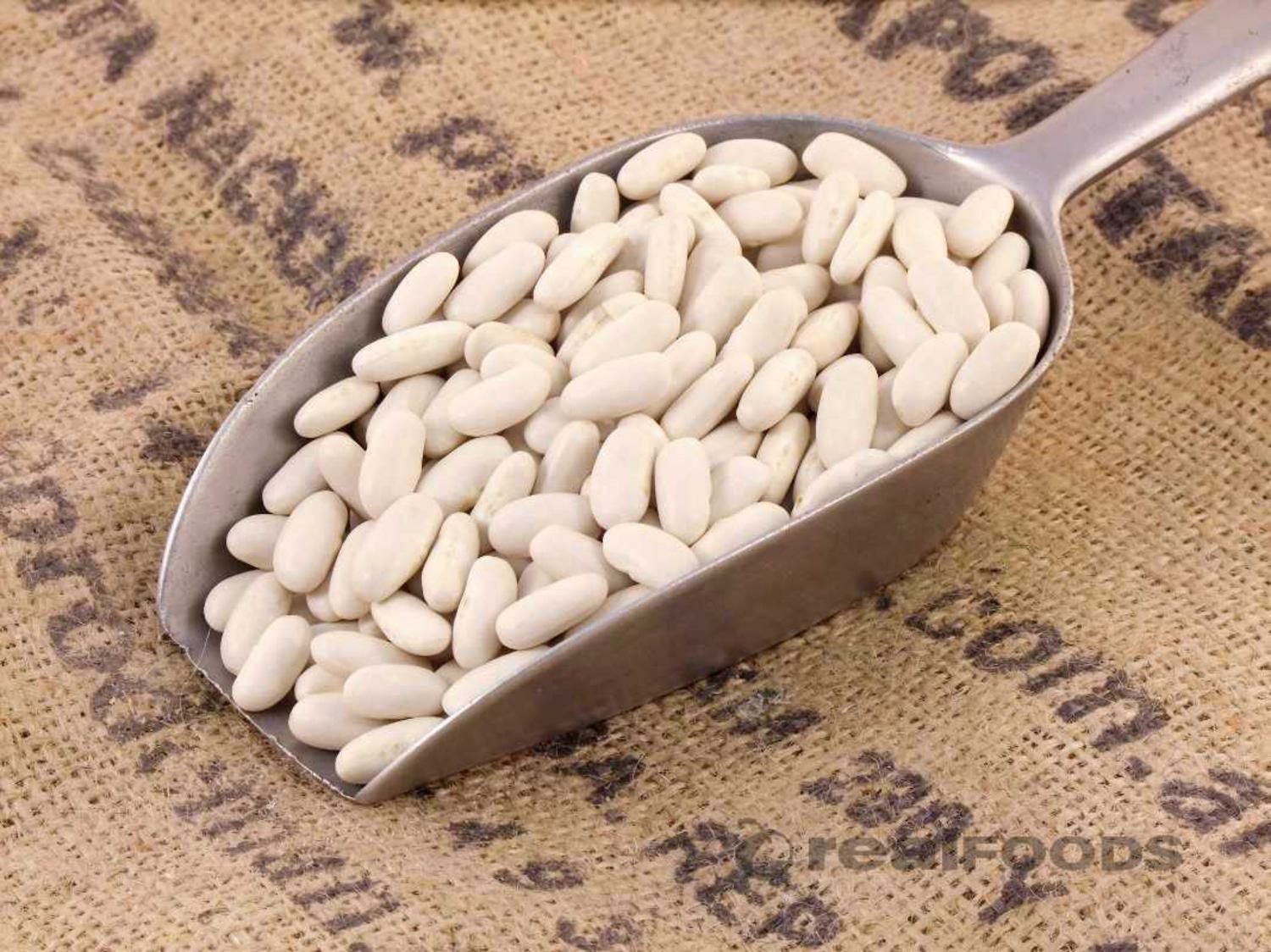
|
Yes (minimum of 4 hours soaking)
|
Boil for a minimum of 10 minutes to remove toxins.
Simmer for 1-2 hours depending on their size.
Pressure cooker 25-30 Mins
Pre-soaked - pressure cooker 6-8 mins
|
Cannellini Beans are a white kidney bean widely used in Italian cuisine. They're a basic ingredient in minestrone soup.
When cooked they have a nutty, mild flavour and creamy almost fluffy texture.
|
Ideal for soups, casseroles and salads. Particularly good in mixed bean dishes.
Try mashing into a puree with garlic, olive oil and seasoning.
Make your own baked beans, adding your favourite spices, onions, tomatoes and a little brown sugar.
|
White beans like Cannellini are the most abundant plant-based source of phosphatidylserine (PS). PS helps to improve the performance of athletes, reduce endocrine stress and may be beneficial for kids with ADHD.
|
|
Chickpea
Otherwise known as Garbanzo Bean or Gram (hence Gram Flour)
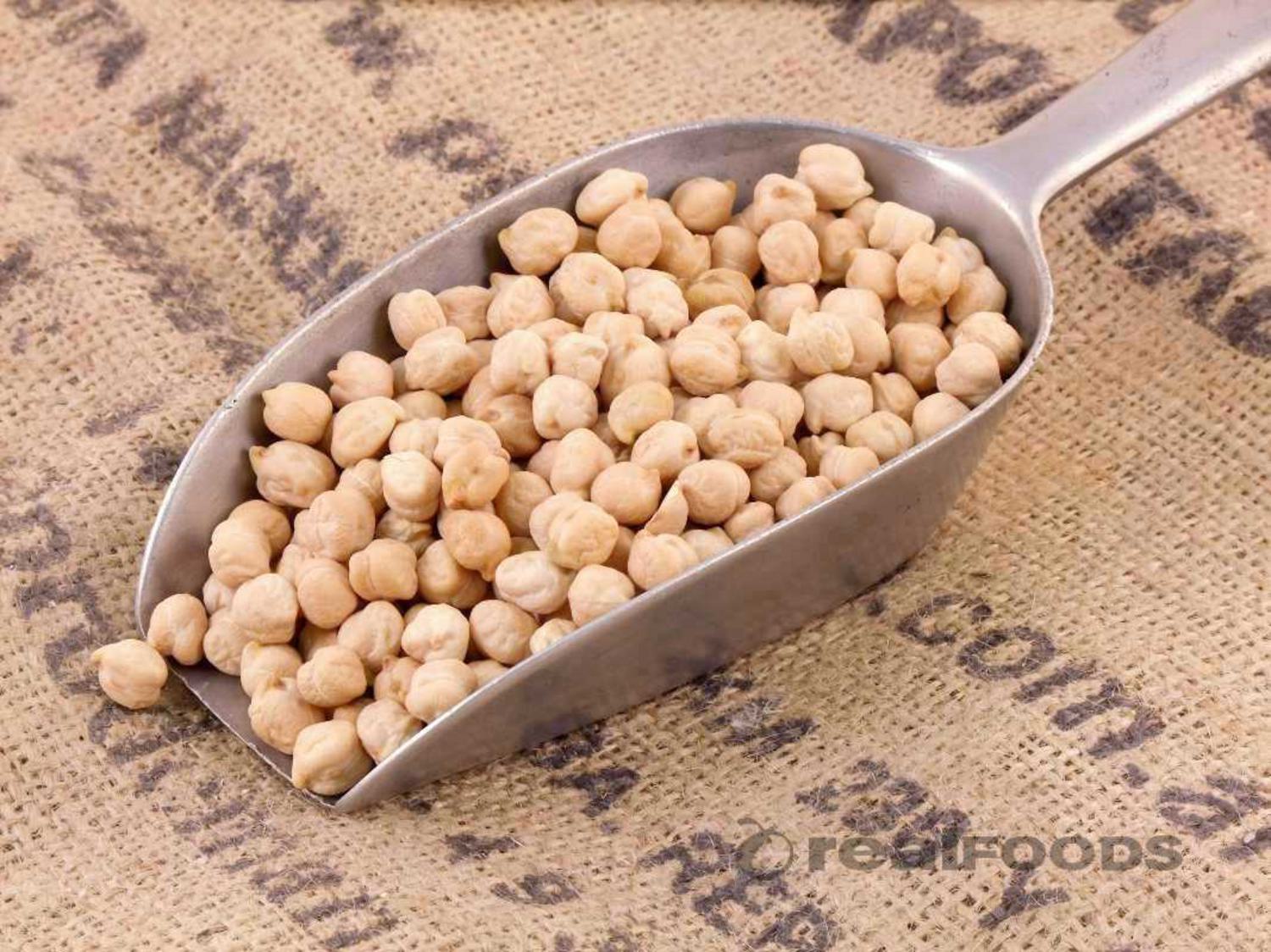
|
Yes (minimum 8 hours or overnight)
|
1-2 hours simmering
Pressure cooker 35-40 Mins
Pre-soaked - pressure cooker 13-15 Mins
|
Small, fawn coloured bean that has been eaten for millennia across the Mediterranean and the Middle East.
When ground and crushed the resultant flour is known as Gram Flour or Chana Dahl.
|
Used in hummus, falafel and even cakes!
They are excellent in stews and curries and are a popular crunchy snack when baked with seasoning.
|
High protein count, rich in nutrients and can help reduce blood cholesterol.
|
|
Flageolet Bean
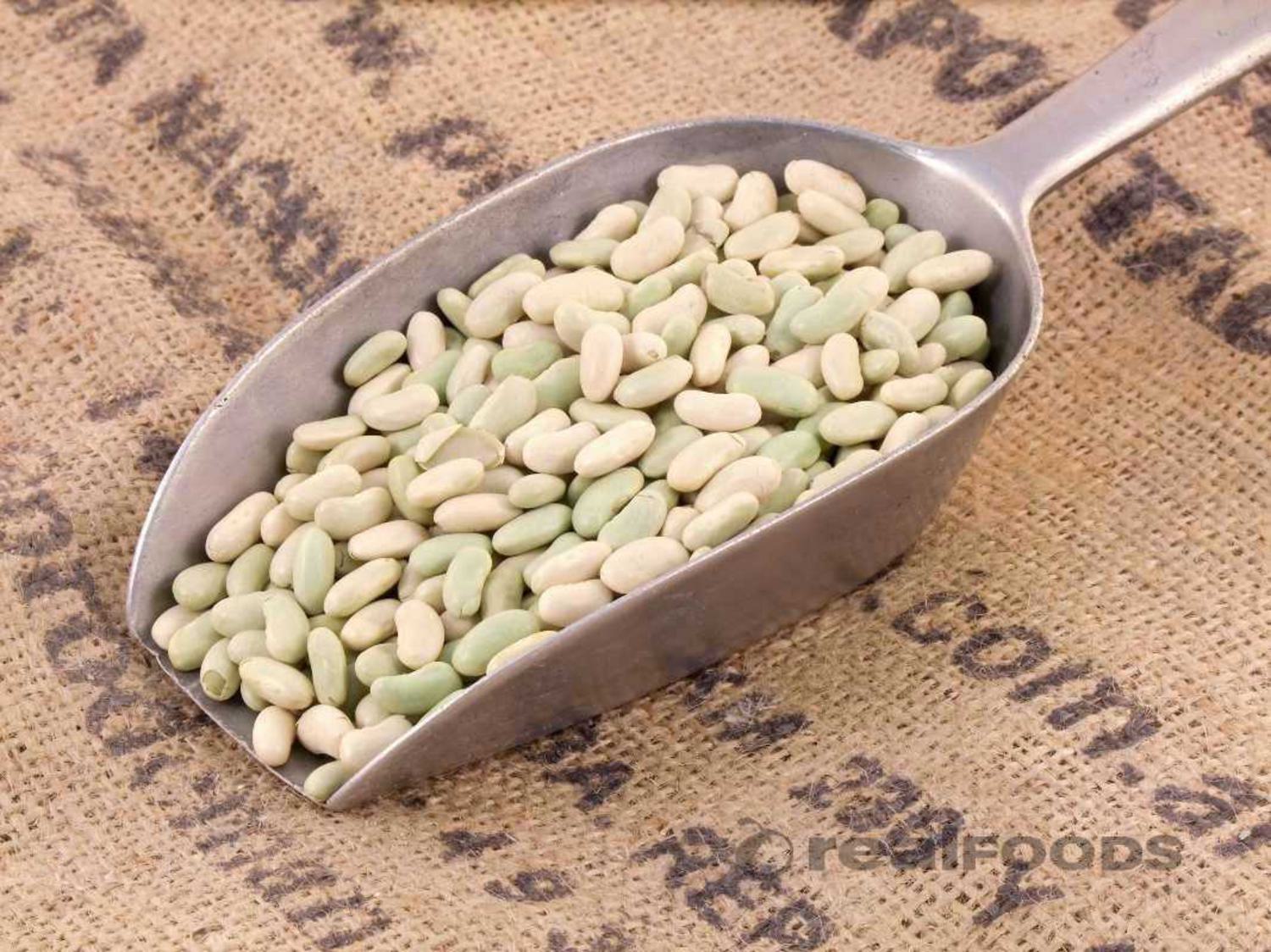
|
Yes (minimum of 4 hours soaking)
|
1 1/2-2 hours simmering
Pressure cooker 18-20 Mins
Pre-soaked - pressure cooker 6-8 Mins
|
Actually a haricot bean, but harvested and dried before they are fully ripened.
Light green, small kidney shaped beans that originated in France. They have a tender skin and a delicate flavour.
|
Great in mixed bean salads or tossed with a little oil or butter as a side dish.
Great as a paste or puree as they take flavours well.
|
Flageolet beans are high in energy because they contain all of the reserves necessary to the future plant during its germination. It is rich in carbohydrates, fibre and vitamin B9.
|
|
Haricot Bean
Also known as a Navy Bean or Great Northern Bean
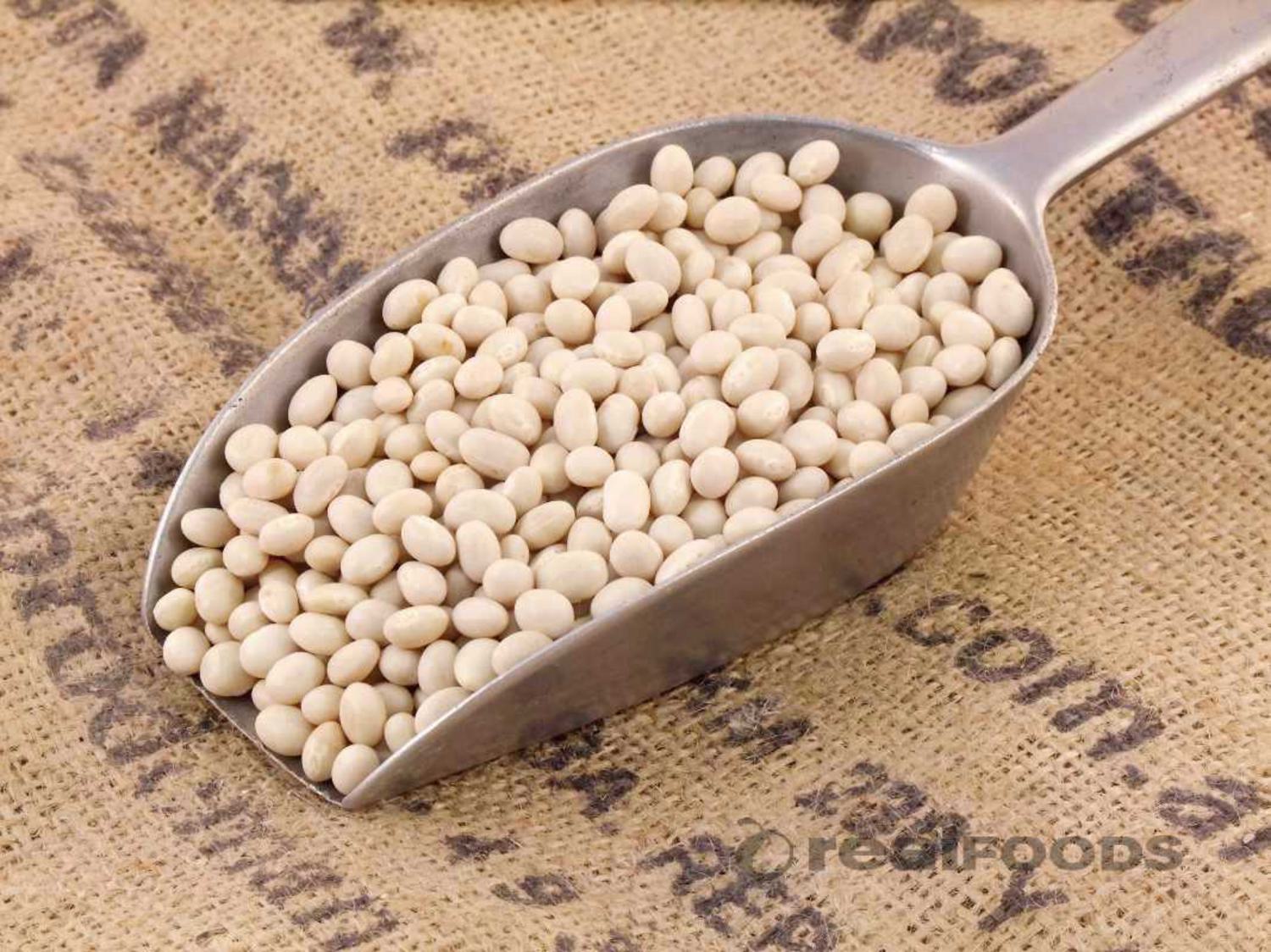
|
Yes (minimum 4 hours soaking)
|
1 1/2 - 2 hours
Pressure cooker 18-20 Mins
Pre-soaked - pressure cooker 6-8 Mins
|
Small, oval and creamy-white., with a mild flavour and smooth almost buttery texture.
Often called a Navy Bean due to being a staple food of the US Navy in the 20th century.
|
The classic ingredient in baked beans, they have little flavour of their own but are brilliant at absorbing flavours and seasoning making them perfect for slow cooked dishes like cassoulet or bean soups.
|
Of all the beans these have the richest source of ferulic acid (an antioxidant) and p-coumaric acid (another antioxidant and possibly reduces the risk of stomach cancer).
|
|
Kidney Bean
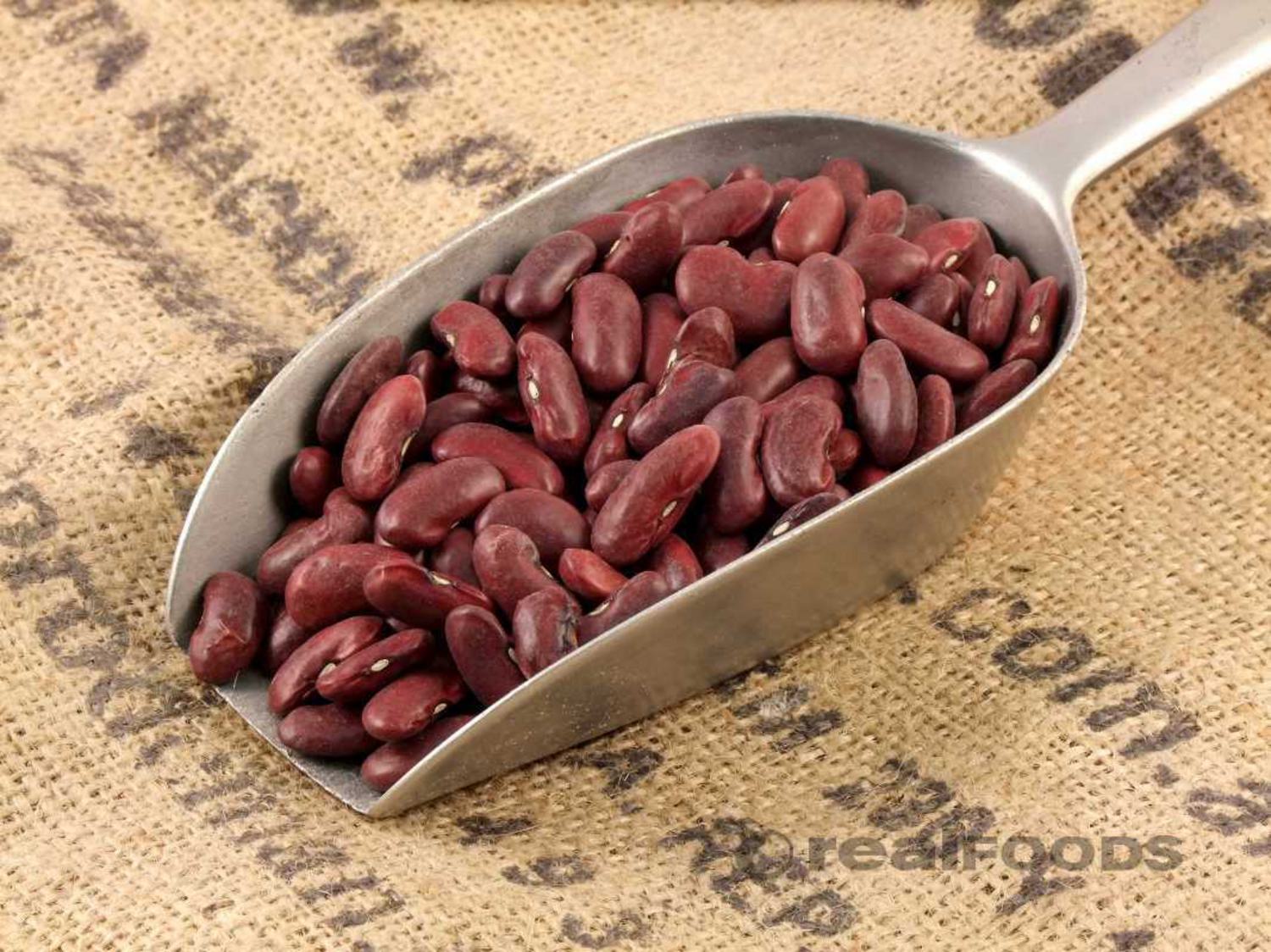
|
Yes (minimum 4 hours)
|
Must boil for a minimum of 10 minutes to destroy the toxin.
Then simmer for 45-60 mins. May need an extra half hour if large and tough
Pressure cooker 22-24 Mins
Pre-soaked - pressure cooker 5-8 mins
|
Looks like a kidney, brownish-red bean with a distinctive 'kidney' shape.
Widely used in chilli and the staple ingredient of beans and rice.
Soft, creamy flesh with a reddish-brown skin.
|
Kidney beans contain a natural toxin called lectin. The toxin is destroyed by proper cooking.
Great in mixed bean salads and stews like chilli.
Often used to replace meat in spicy dishes.
|
They are a very good source of molybdenum, folate, dietary fibre, and copper and are a good source of manganese, phosphorus, protein, vitamin B1, and iron.
|
|
Black Lentils
Otherwise known as Urad Beans
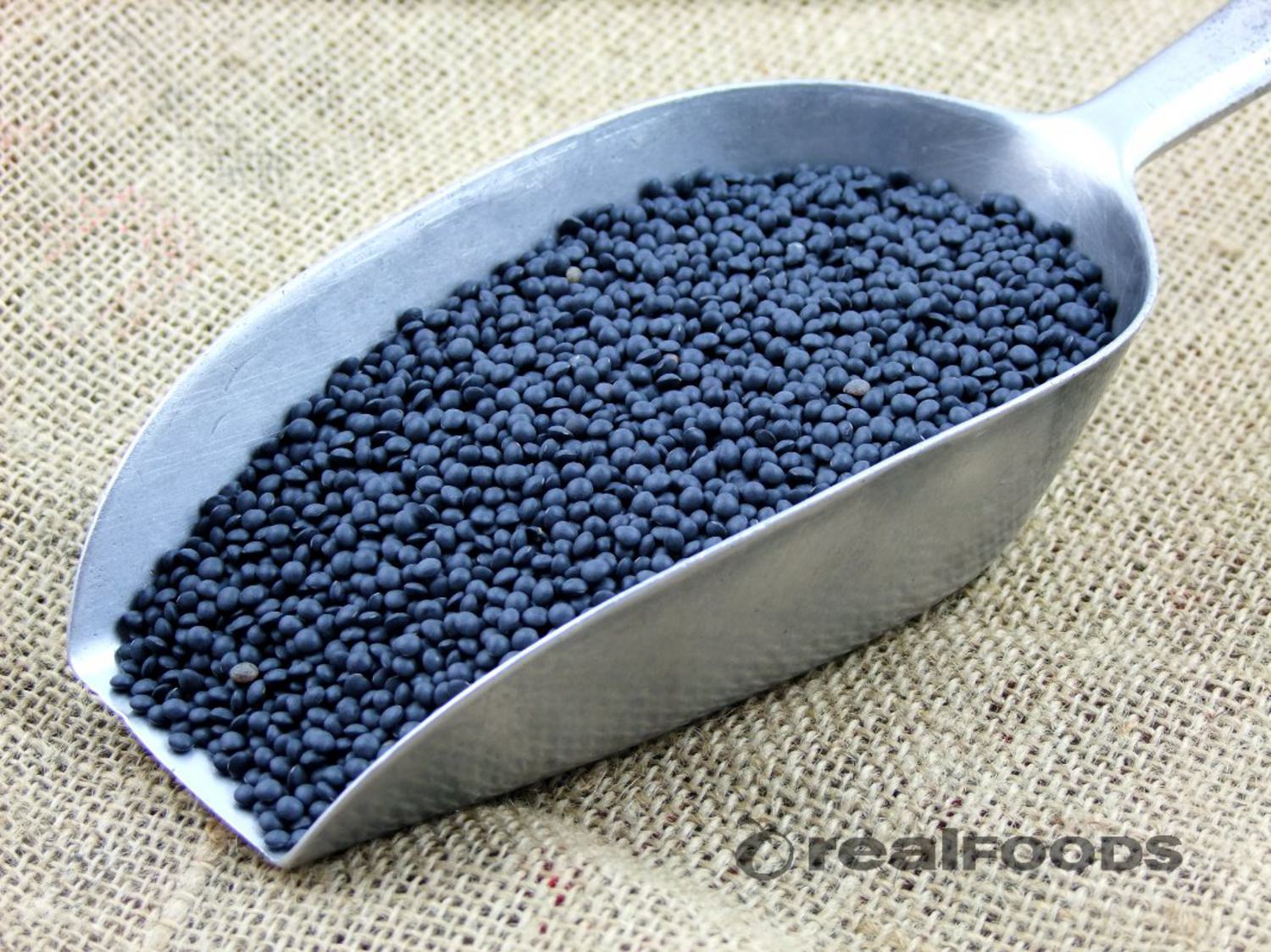
|
No
|
Simmer for 35-45 Mins
Pressure cooker 10-12 mins
|
Black skins cover a creamy white interior. Strong earthy flavour and widely used in curries.
|
Usually used to make daal in Indian cooking and also popular in Bangladeshi cuisine.
|
Lentils are an excellent source of molybdenum and folate. They are a very good source of dietary fibre, copper, phosphorus, and manganese.
|
|
Brown Lentils
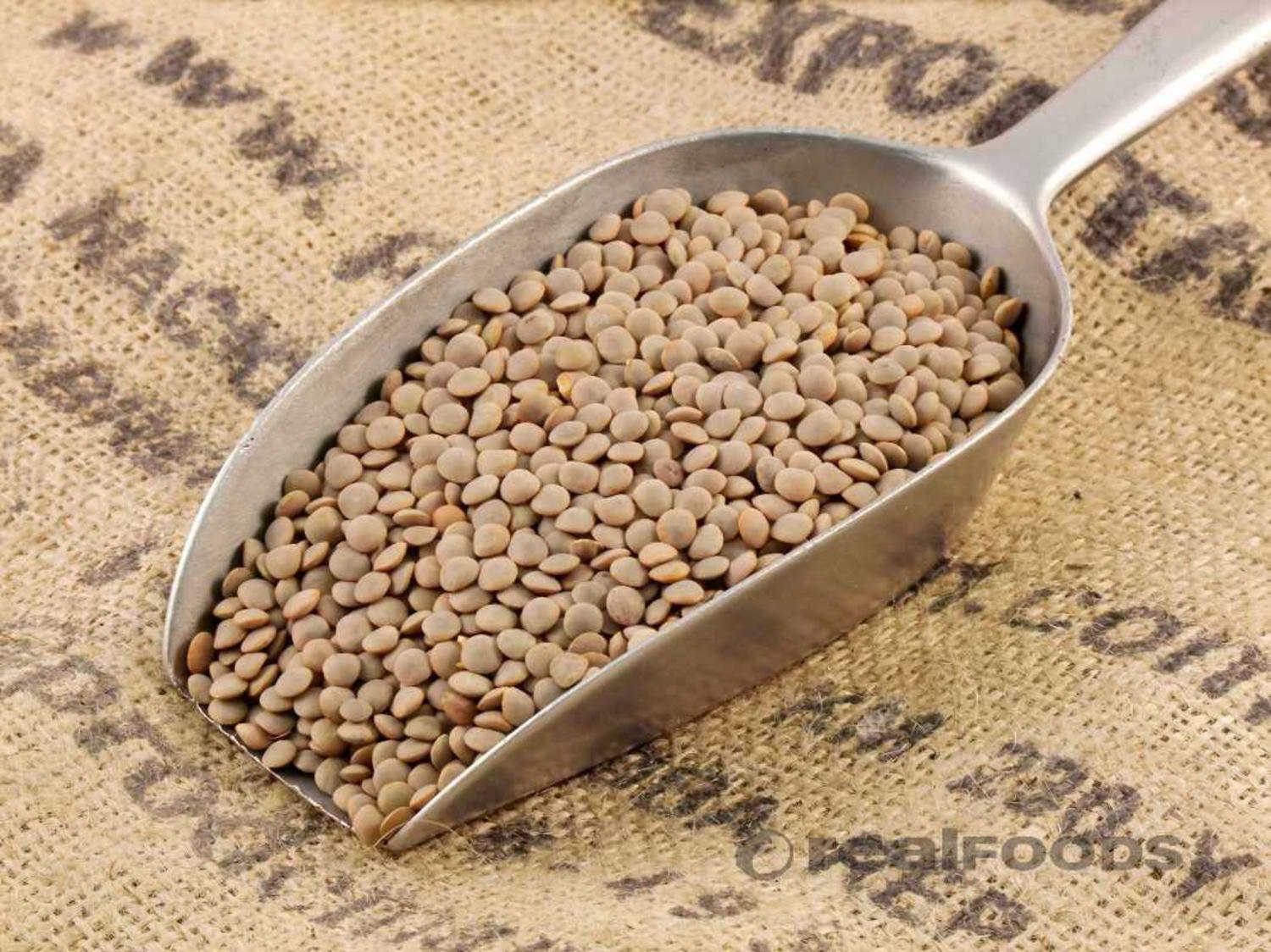
|
No
|
Simmer for 35-45 Mins
Pressure cooker 10-12 mins
|
The most commonly used lentil features a mildly earthy flavour profile and smooth texture.
|
Use in soups (they have a mushy texture when cooked) and casserole dishes.
|
Lentils are a good source of iron, protein, vitamin B1, pantothenic acid, zinc, potassium, and vitamin B6.
|
|
Green Lentils
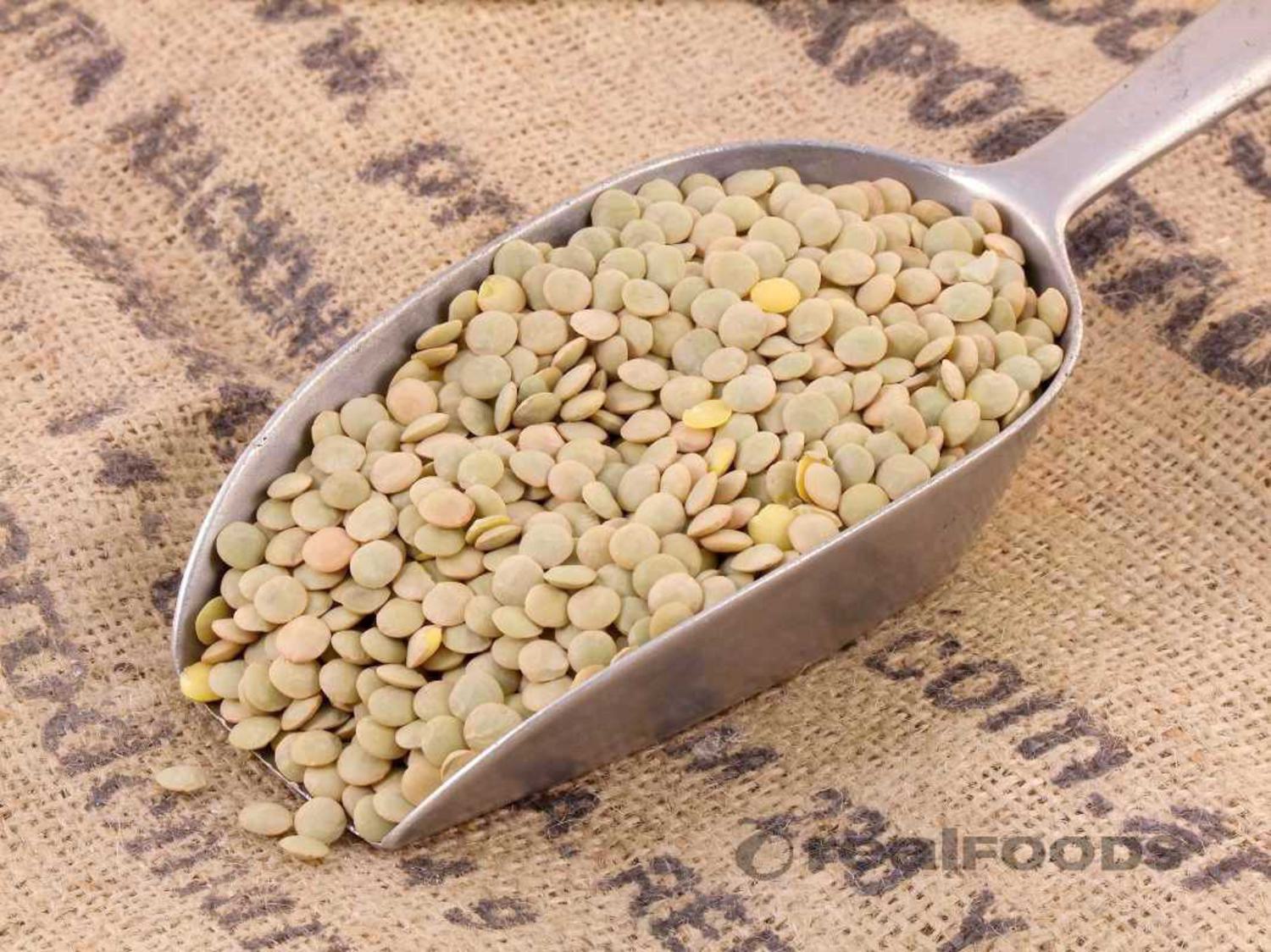
|
No
|
Simmer for 35-45 Mins
Pressure cooker 10-12 mins
|
Firm and flavourful, green lentils don’t break down easily with stirring or mixing, making them ideal for salads and pilafs.
|
Can be used in salads as well as curries, soups and dhal.
|
Some soluble fibre and excellent levels of insoluble fibre helping maintain gut health and reduce LDL levels.
|
|
Dark Green Speckled Lentils
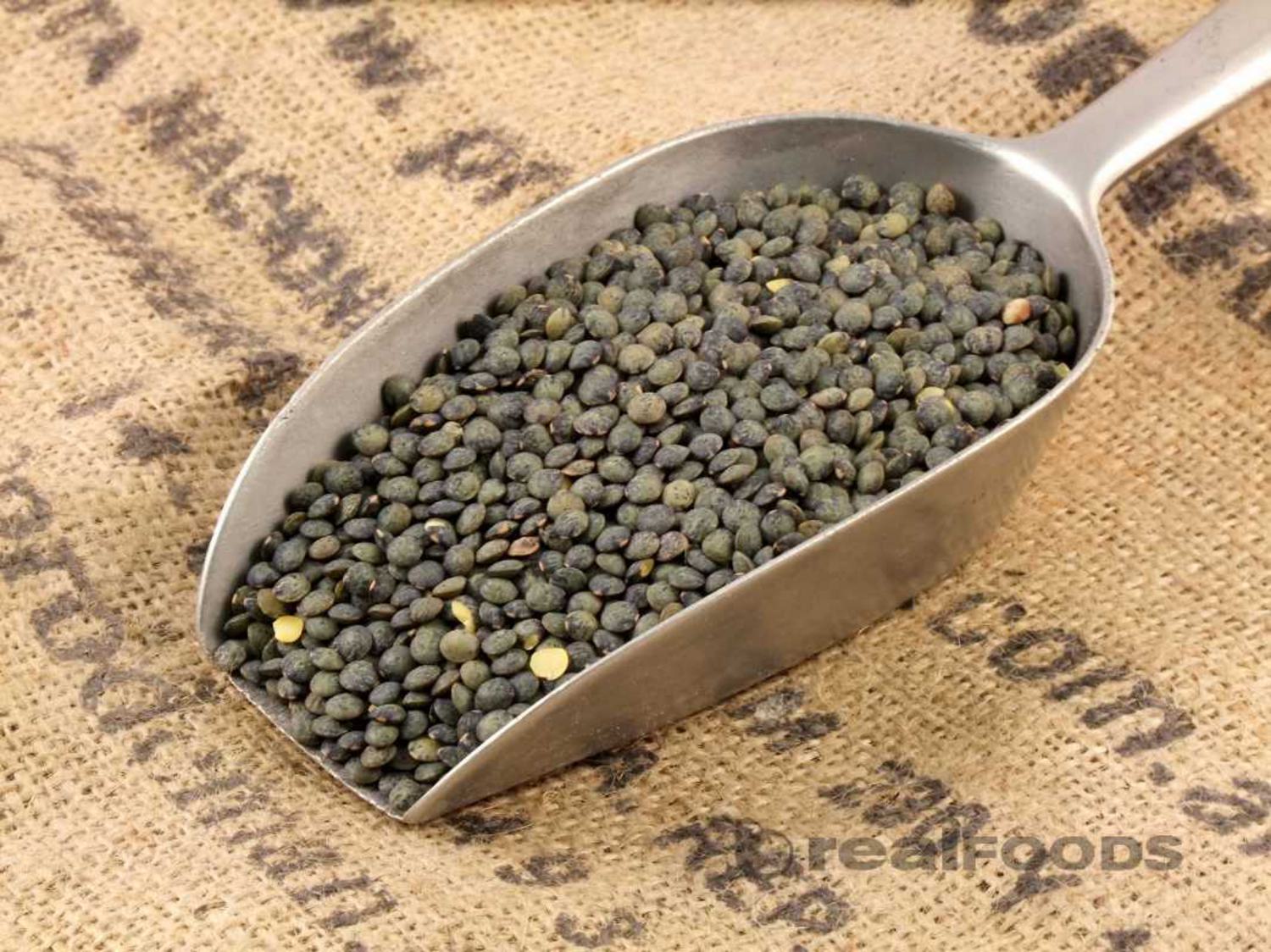
|
No
|
Simmer for 20 -25 mins.
Pressure cooker 8-10 Mins
|
These little green and blue marbled lentils retain their shape on cooking (although not as much of their colour) and have a delicious flavour.
|
For cold salads, try mixing Dark Green Speckled Lentils with sundried tomatoes, fresh herbs, olive oil and whatever else you like. Or use just cooked Dark Green Speckled Lentils with thyme and roasted garlic. Stir in chunks of goat cheese and serve with wedges of roasted butternut squash.
|
High in protein, folate and iron like all the lentils.
|
|
Red Split Lentils
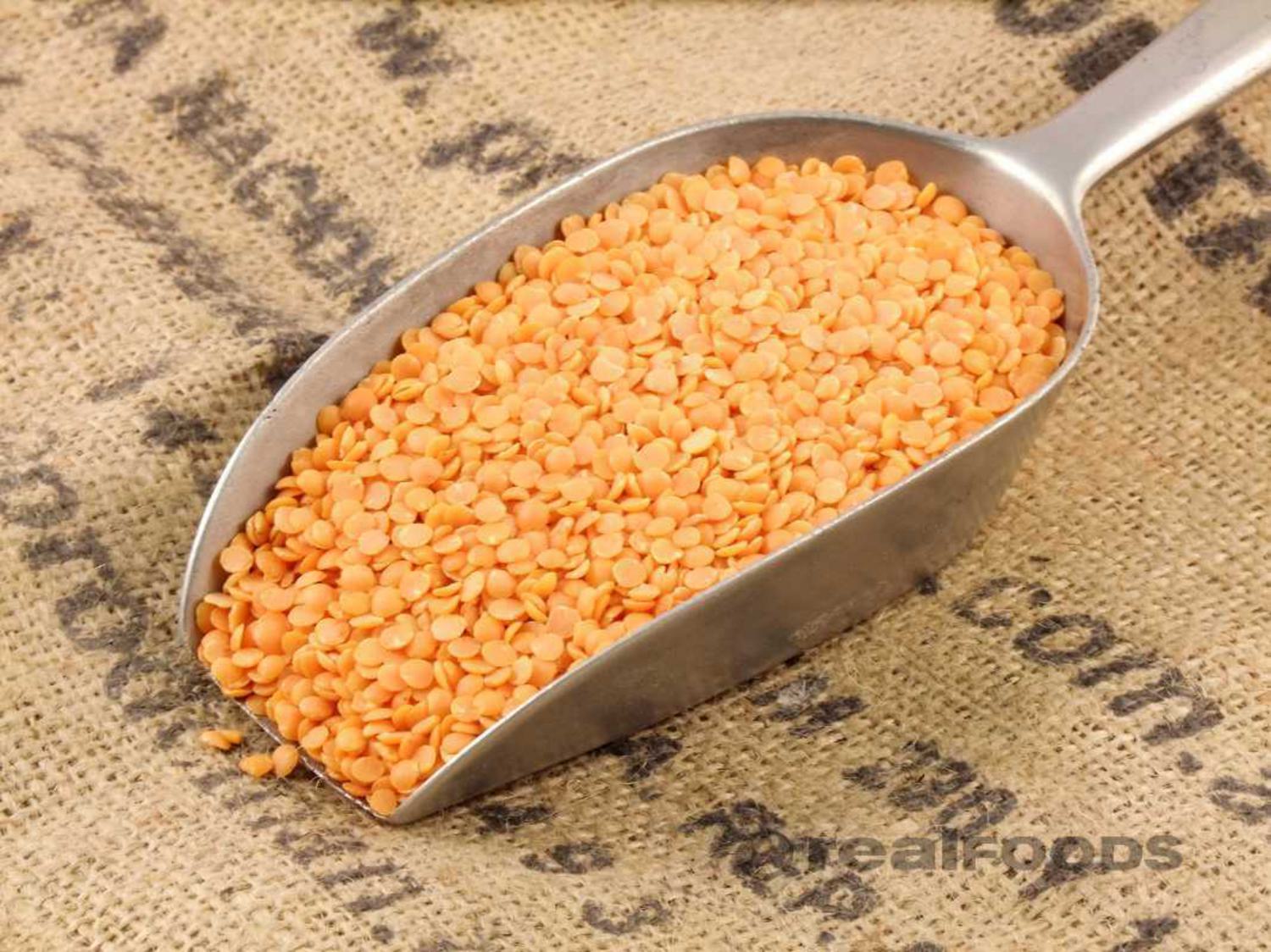
|
No
|
Simmer for 15-20 mins.
Pressure cooker
4-6 min
|
A light red to orange colour, red lentils are actually a split and hulled version of the yellow lentil, with the shortest cooking time of all varieties.
|
Add twice as many carrots to lentils, cook for 20 minutes, blitz and add seasoning for perfect lentil soup.
Use them for soups and spicy Indian daals.
|
High in dietary fibre, protein and are also low fat. Help to give you a satiated feeling.
|
|
Mung Bean
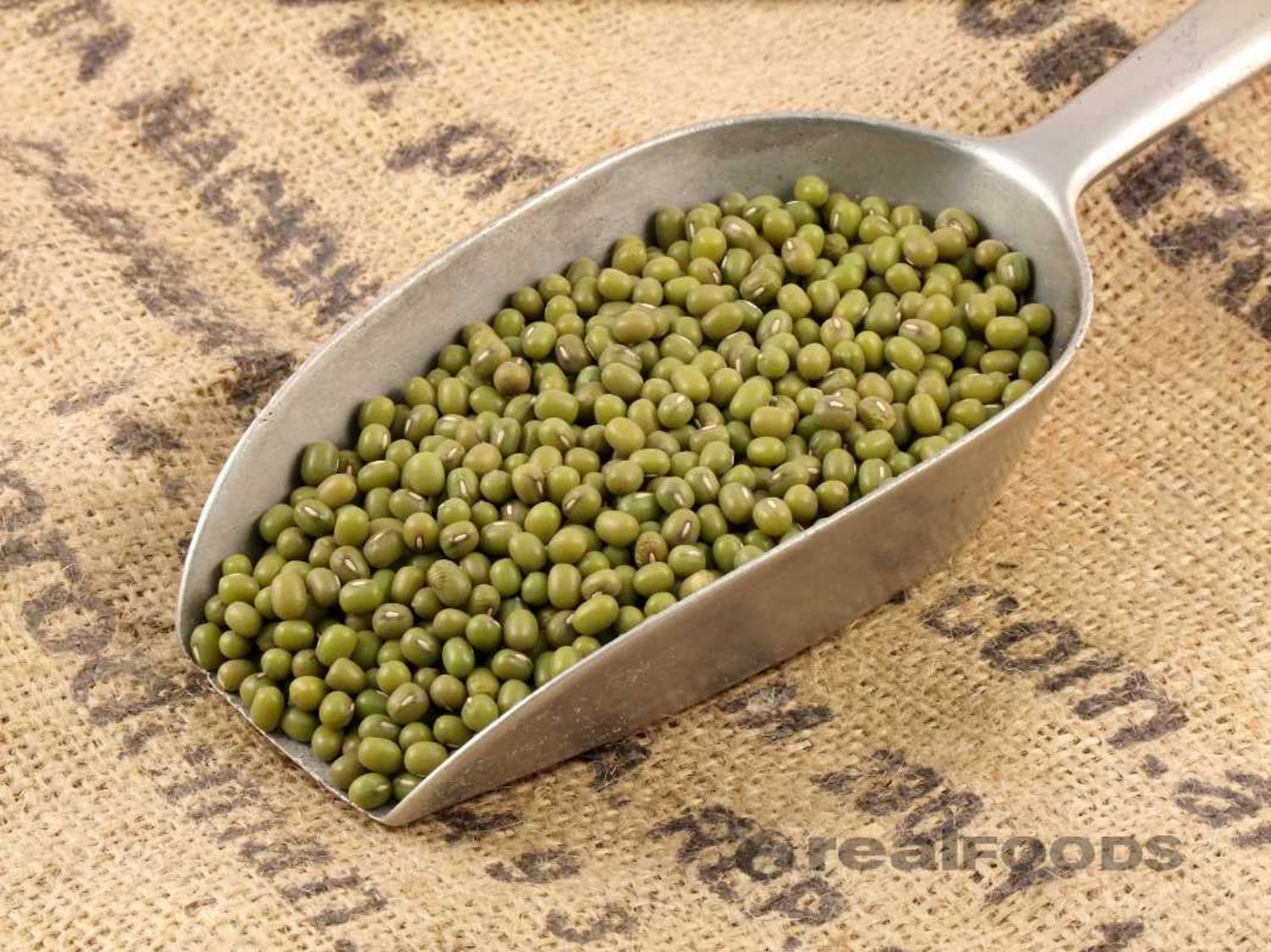
|
No
|
1 hour - 1 1/2 hours
Pressure cooker 6-8mins
|
A small, yellowish-green bean (although occasionally they are completely yellow), they are tiny, tender and slightly sweet.
Hulled and split mung beans are called Mung Dahl.
|
Used in soups, salads, casseroles and curries. They are also often used in sprouting and are very popular as a source of bean-sprouts.
Particularly easy to digest and take on seasonings well.
|
A brilliant source of potassium with good levels of B vitamins and magnesium. Like all legumes, they are high in fibre and protein also.
|
|
Marrowfat Peas
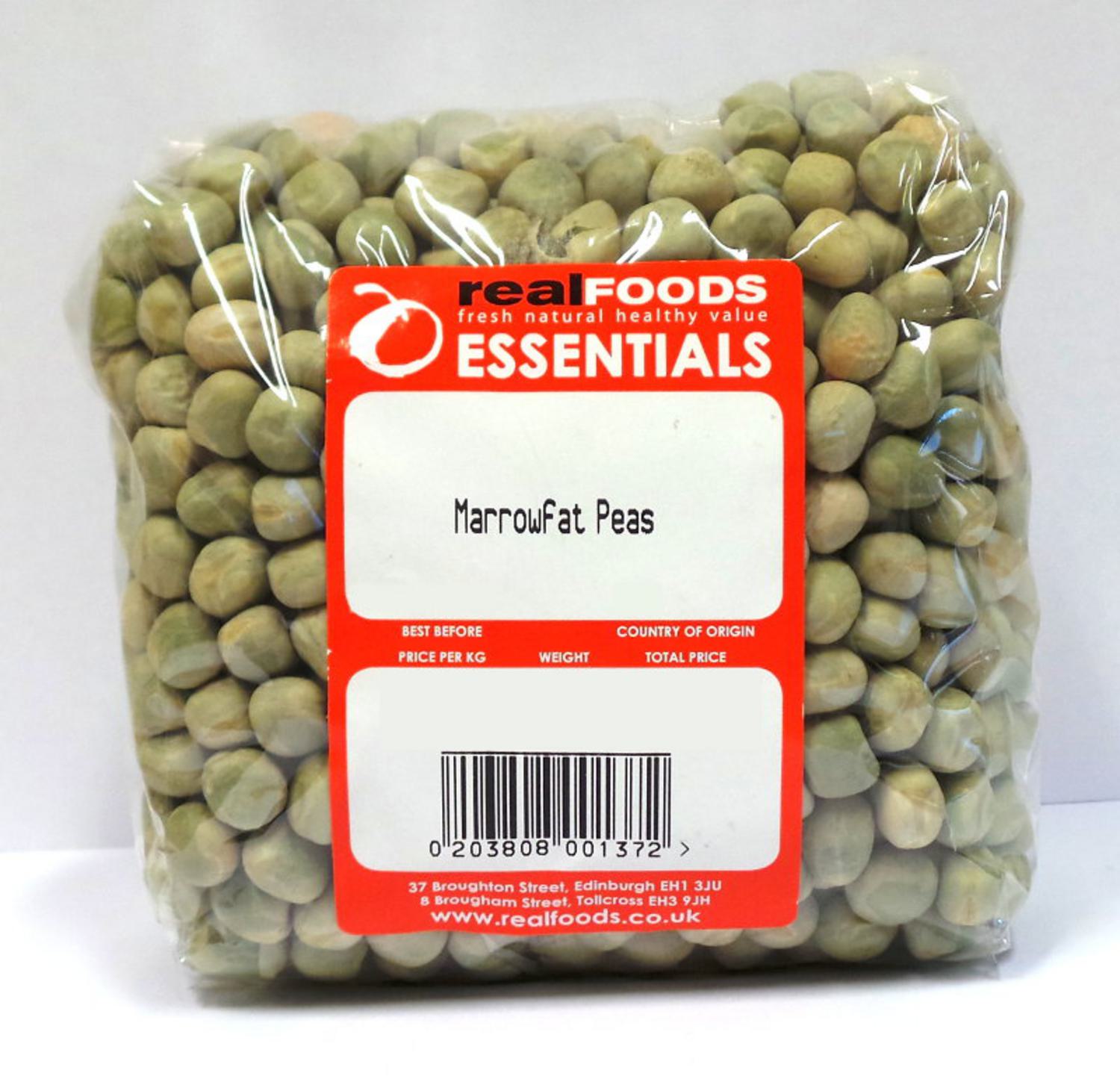
|
Yes - ideally 12 - 16 hours (sometimes with a bicarb tablet to help soften them and retain the colour)
|
Simmer for 20-30 minutes
Pressure cooker 16-18 Mins
Pre-soaked - pressure cooker 8-10 mins
|
Peas that have been dried out in the field naturally rather than being harvested when fresh and young.
|
Used to make mushy peas, they are also often used for snacks, for example, coated in wasabi.
|
Marrowfat Peas are packed with nutrients including Vitamin A, C, B1, Iron and Phosphorous and are rich in protein, carbohydrate and fibre.
|
|
Green Split Peas
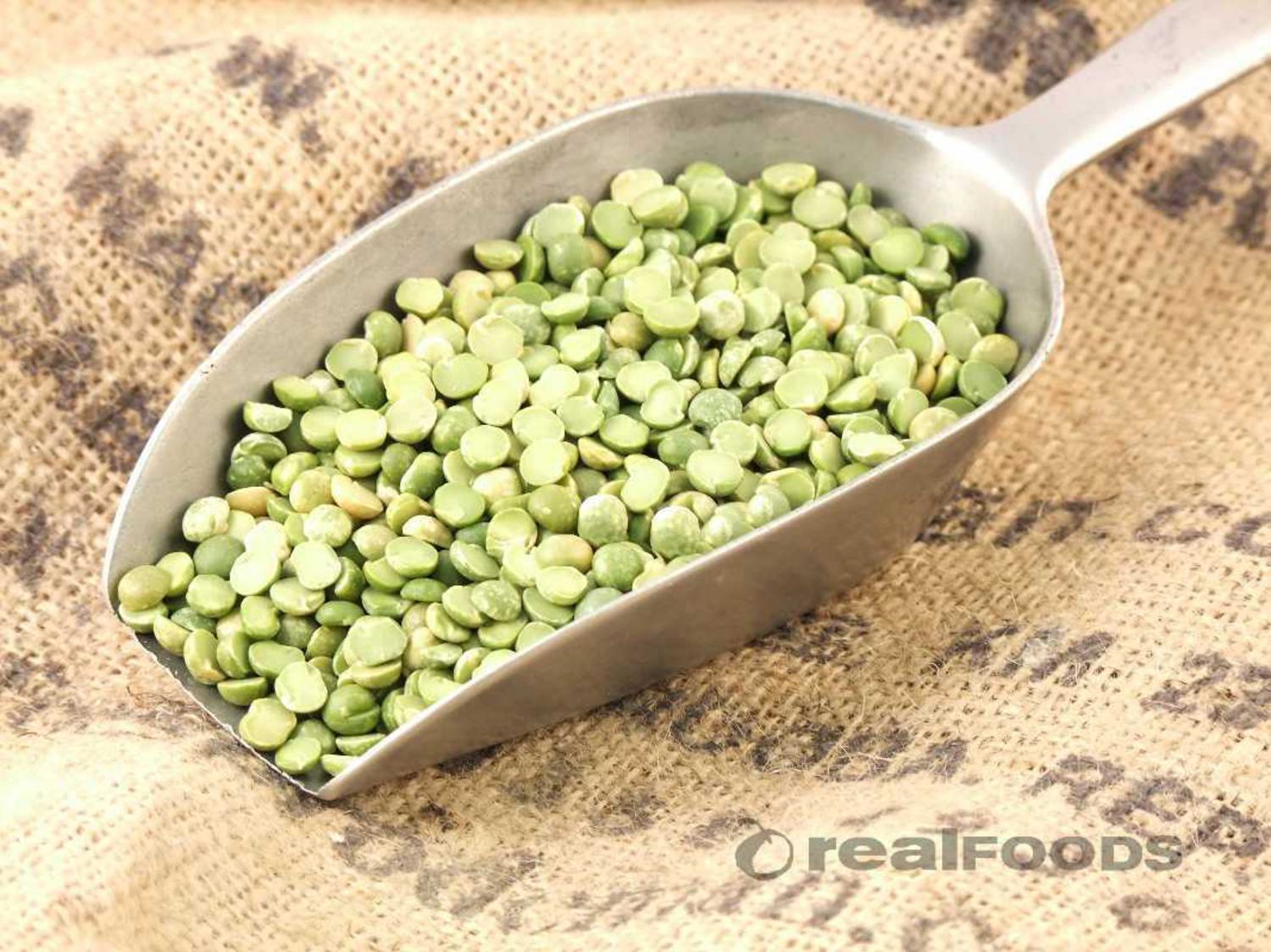
|
No (If you want to you can soak for around 6 hours and it will reduce cooking time by half an hour roughly.)
|
Simmer for up to an hour
If soaked 45 mins ought to do it
Pressure cooker 1 minute
|
Cook the split peas for 20 minutes if you want them to be relatively crisp for salads; 30-40 minutes if they will be added to a main dish; and 40 minutes to an hour if you are making soup or intend to puree them.
|
Most popular for using in split pea soup.
|
Dried peas are an excellent source of molybdenum.
|
|
Yellow Split Peas
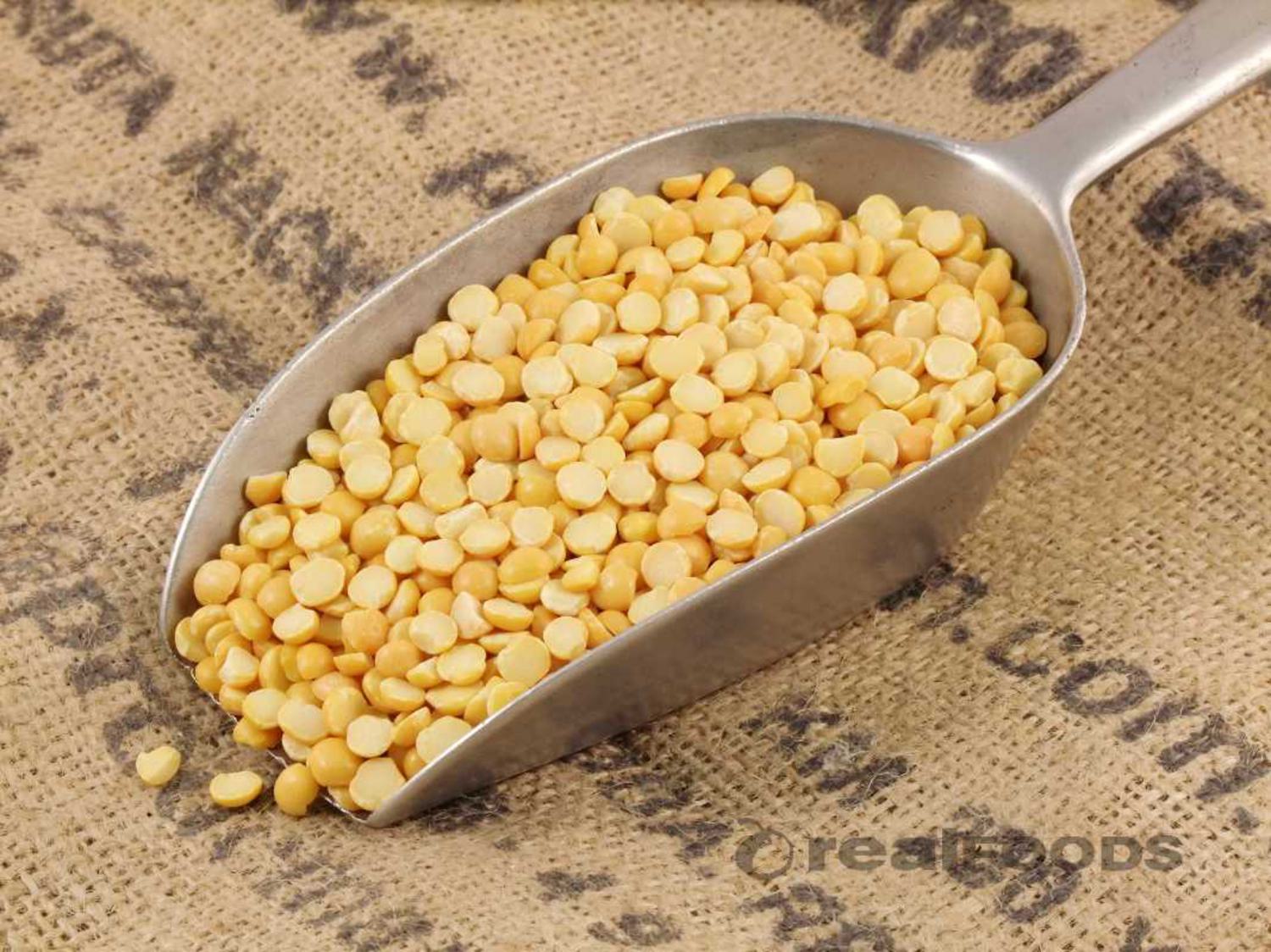
|
No (if you do want to soak them don't use baking soda to soak split peas it will turn them into a watery purée!)
|
Simmer for up to an hour
If soaked, 45 minutes ought to do it.
Pressure cooker 1 minute
|
Slightly more delicate flavour than their green counterparts. Apart from that, they can basically be treated the same (see above)
|
Used in daals, soups, pease pudding and dips as they break down fairly quickly and rarely retain any shape. Also used in Fava ( a popular Greek dish) simply cook down with water and a little salt and drizzle olive oil and sprinkle some raw chopped onions over before serving.
|
Dried peas are also a very good source of dietary fibre and a good source of manganese, copper, protein, folate, vitamin B1, phosphorus, vitamin B5, and potassium.
|
|
Pinto Beans
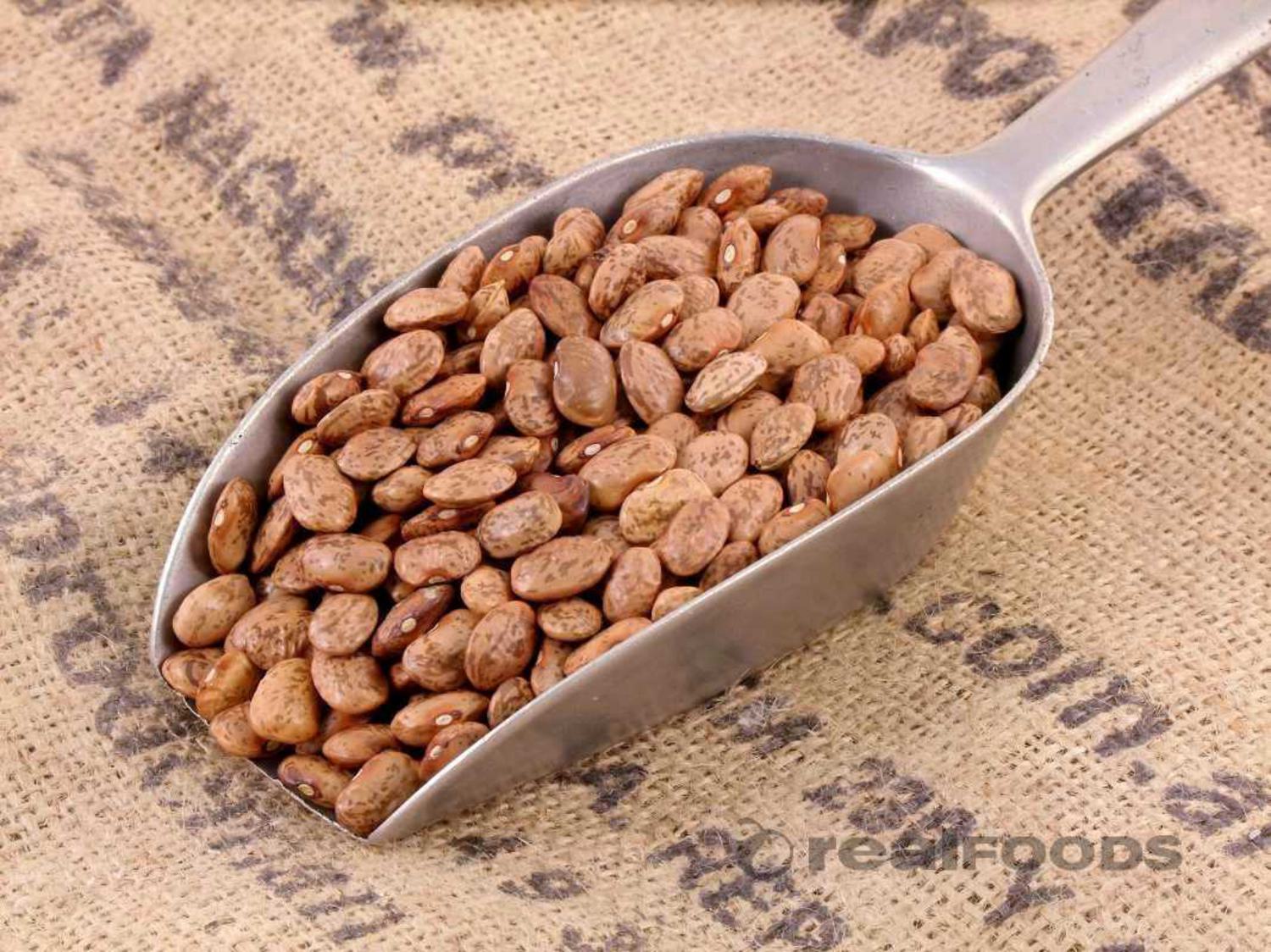
|
Yes
|
1 1/2 -2 hours
Pressure cooker 22-24 Mins
Pre-soaked - pressure cooker 4-6mins
|
An orangey-pink bean with reddish specks (pinto comes from the Spanish word for painted, as that's what they look like!)
A variety of kidney bean.
Often used in Mexican cooking for refried beans and burritos.
|
Pintos go beautifully pink when cooked.
Often cooked with rice so that the water turns the rice a great shade of pink.
Use as a side dish or add to salads and burritos.
|
Good levels of folate, magnesium and potassium. A good choice to help prevent high blood pressure and protect against atherosclerosis.
|
|
Soya Beans
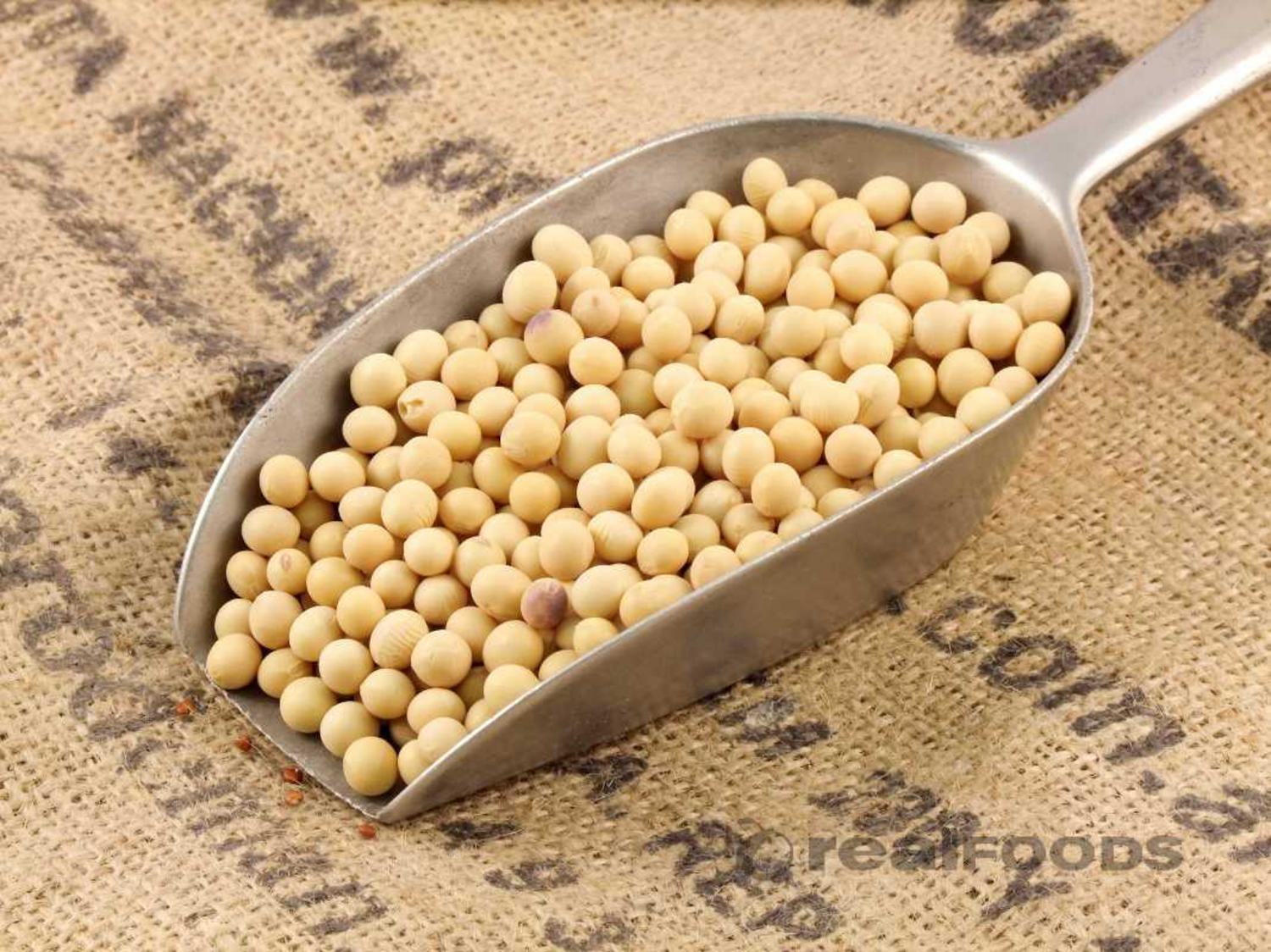
Edamame are the young green soya beans
|
Yes (minimum of 12 hours recommended by NHS - 7-9 hours recommended for best results making soya milk* paper here from research gate)
|
3-4 hours
Must boil for an hour then simmer for the next 2-3 hours to destroy all toxins and ensure they are fully cooked
Pressure cooker 35-40 Mins
Pre-soaked - pressure cooker 20-22 mins
|
A small, pale yellow bean. Widely grown and subject to some controversy due to GMO and animal feed uses
|
Used to make fermented foods in Japan and Asian countries, soy milk, tempeh and soybean oil is also created from them.
Often used in curries and popular roasted with spices for a crunchy snack. Try a bean burger.
|
A high antioxidant food. Contains isoflavones that may reduce cancer risks. Also high in phenolic acids (another antioxidant phytonutrient). May help support bone health through its good amounts of vitamin K. Contains all 8 essential amino acids.
|